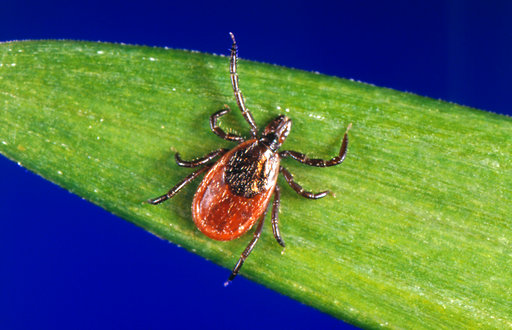
SYRACUSE, N.Y (NCC NEWS)— Ticks and tick-borne illnesses are not new to the Central New York area. However, with the surge in the tick population, the risk factor has increased even more. While some may find it troubling to hear about, one mom from the Westside of Syracuse says she’s not too concerned at all.
Emily Nellenback and her husband Ryan are the proud parents of two young boys under three and an 60-pound pit bull. Playtime in the backyard and family walks with the dog are a regularly scheduled part of their day. Even still, when Nellenback heard about the surge, her reaction was one that you probably wouldn’t expect.
“I’m not worried about it, I’m aware of it.” Nellenback said confidently.
For Nellenback, certain preventative measures that keep ticks out of her home have always been second nature. Safety measures that have kept her children and her dog safe from bites and tick-borne illness.
“My dog is on flea and tick meds and I don’t know, my kids have never had a tick on them so I don’t worry about it. I guess if they get a tick on them, then I’ll worry about it.” Nellenback said.
Nellenback is not the only one who says that taking as many preventative measures as possible is important. Registered Nurse, Morel Anderson, also agrees that staying one step ahead of a bite can keep everyone safe and keep everyone outside for summer.
“If you like to be outside, like I like to hike, and it’s hot, it’s summer. I don’t want to be hiking in leggings and a long sleeve t-shirt. So they say to just stay as central to the path as you can if your dogs run off, they should be on flea and tick preventative all year round anyway and you just have to check yourself and your family.” Anderson said.
While avoiding tick bites in the midst of a surge is always the best case scenario, it can’t always be guaranteed. Anderson says that because of that, knowing how to keep an eye out for new bites is essential.
“So you should look for redness, itching. If you are darker then you should look for more of a purple hue because you won’t be red per say. Arms and legs. Usually if a tick bites you in your chest, it’s because it’s fallen out of a tree or something because they don’t fly. So mostly check your arms, legs. They like to migrate to warmer parts. So like your armpits, your groin, your neck.” Anderson said.
The simple body check that Nellenback does during her kids nighttime routine.
“Probably at bath time, you see it, my kids are pasty, so you would see it anywhere on them.
But you wanna check like in between toes and stuff like that.” Nellenback said.
Anderson says that if you do find a tick you should not automatically think of Lyme disease. Especially, if you find a new bite within a 36-hour window. The chances of contracting it are not as high. She says that if you begin to have fever, rash, swelling or stiffness in your joints, then it’s probably time to see your doctor.
“Well, if you know you’re bit and you see that it’s red or uncomfortable, then I always suggest that you go to the doctor so they can prescribe you antibiotics. They’ll probably put you on something called doxycycline which will just be prophylactic or preventative of it developing into full blown Lyme disease.” Anderson said.




